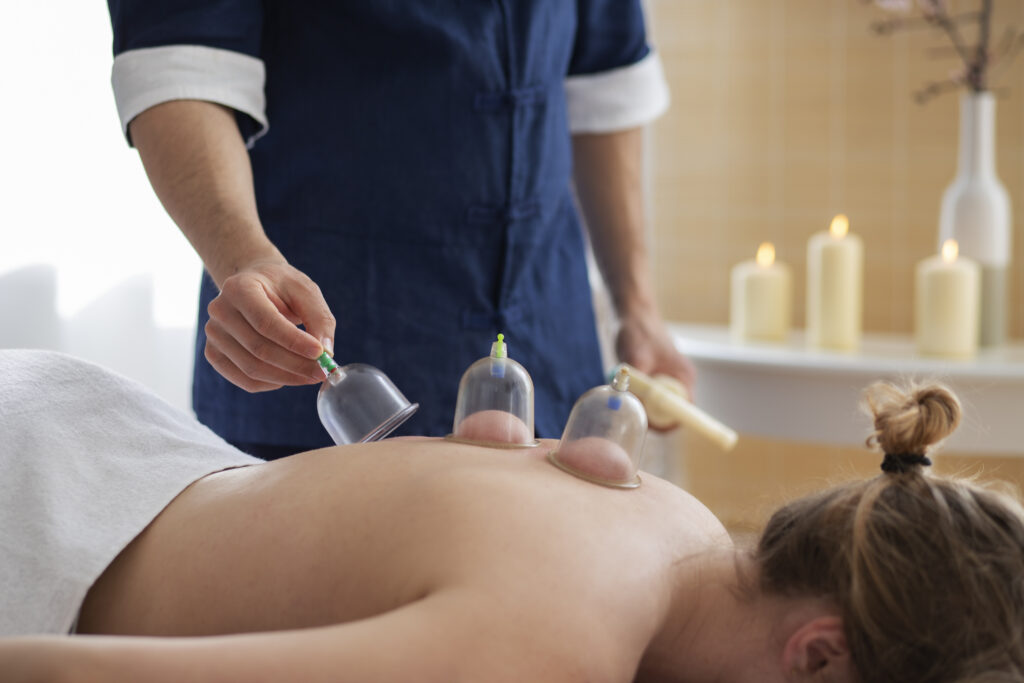When seeking cupping therapy, choosing a qualified and safe practitioner is crucial for a positive and effective experience. This isn’t just about finding someone who knows the basics; it’s about ensuring their training, certifications, and hygiene practices meet professional standards. A good practitioner will not only provide the therapy but also prioritize your safety and comfort throughout the process.
What to Look for in a Cupping Therapist
The first step in finding a qualified cupping therapist is to do your homework. Cupping is a technique that is often performed by various healthcare professionals, but their training and experience can vary significantly. Here’s a breakdown of what to consider:
Professional Credentials and Background:
Cupping is a modality often integrated into the practice of licensed healthcare providers. Look for a practitioner who is already licensed in a related field, such as a Registered Massage Therapist (RMT), a chiropractor, a physical therapist, or an acupuncturist. These professionals have a solid foundation in anatomy and physiology, which is essential for safely and effectively applying cupping cups to the body.
Specialized Cupping Certification:
Even if they are a licensed professional, ask if they have specific training and certification in cupping therapy. Many organizations offer specialized courses that teach the proper techniques, protocols, and contraindications of cupping. A certified practitioner has demonstrated knowledge beyond a basic introductory course, understanding the nuances of different cupping methods (dry, wet, fire, gliding) and how to apply them to various conditions.
Experience and Expertise:
Inquire about their experience with cupping therapy. How long have they been practicing it? Do they specialize in a particular type of cupping or a specific condition, like sports recovery or chronic pain? A practitioner with a history of successful treatments is more likely to provide a safe and effective session. Don’t be afraid to ask for testimonials or reviews from previous clients.
Initial Consultation and Assessment:
A professional cupping therapist will always conduct a thorough initial consultation before the session begins. They should ask you about your medical history, any current health conditions, medications you’re taking, and your treatment goals. This step is vital for ensuring the therapy is right for you and for identifying any contraindications that could make cupping unsafe. A responsible therapist will not hesitate to advise against the treatment if it’s not suitable.
Hygiene and Safety Practices:
Non-Negotiables:
Beyond qualifications, the hygiene and safety standards of the clinic are paramount. Since cupping involves placing cups directly on the skin, and sometimes creating small incisions (in the case of wet cupping), there is a risk of infection if proper protocols are not followed.
Sanitization and Sterilization:
The cups and other equipment used during the session must be properly cleaned and sterilized. For dry cupping, reusable cups should be thoroughly disinfected between clients. For wet cupping, which involves drawing blood, only single-use, disposable cups should be used. This is a critical safety measure to prevent cross-contamination.
Cleanliness of the Environment:
The entire treatment room should be clean and well-maintained. Look for clean linens, a disinfected treatment table, and a tidy workspace. The practitioner themselves should practice good hygiene, including washing their hands before and after the session and wearing gloves, especially during wet cupping.
Proper Technique:
The therapist should use a technique that is both effective and safe. This includes controlling the amount of suction, ensuring the cups are placed correctly, and monitoring your comfort throughout the session. If the practitioner uses fire cupping, they should handle the flame with extreme care to prevent burns.
Post-Treatment Care:
A qualified therapist will provide you with clear instructions for post-treatment care. They should explain how to care for the cupping marks, what to do if you experience any discomfort, and when to expect the marks to fade. They should also advise you to avoid certain activities, like vigorous exercise or a hot shower, immediately after the therapy.
Final Thoughts
Finding a cupping therapist isn’t just about relieving muscle tension; it’s about entrusting your health to a professional who is both skilled and responsible. Taking the time to research a practitioner’s qualifications, certifications, and hygiene standards will ensure you have a safe and beneficial experience.


